#DynamicPricingStrategy
Explore tagged Tumblr posts
Text
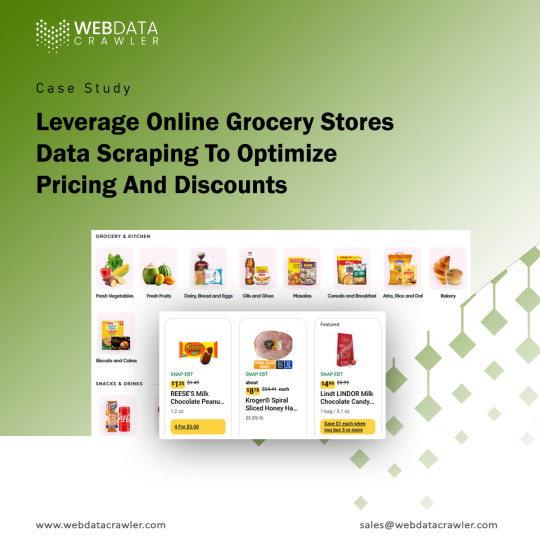
Leverage Online Grocery Stores Data Scraping To Optimize Pricing And Discounts Use Online Grocery Stores Data Scraping to track competitor prices, optimize discounts, and enhance pricing strategies for better sales and customer engagement. read more: https://www.webdatacrawler.com/online-grocery-stores-data-scraping-pricing-optimization.php
#OnlineGroceryStoresDataScraping#GroceryPriceMonitoring#OnlineGroceryPriceScraping#WebScrapingGroceryData#MRPScrapingServices#QuickCommerceDataScraping#GroceryDeliveryDataScraping#CompetitivePricingIntelligence#PriceTrackingSolutions#BigBasketDataScraping#ZeptoGroceryDeliveryDataScraping#JiomartDataExtractionServices#EcommercePriceMonitoring#RetailPriceOptimization#DynamicPricingStrategy
0 notes
Text
Scrape Sports Tourism Data 2025 for Smarter Fan Engagement
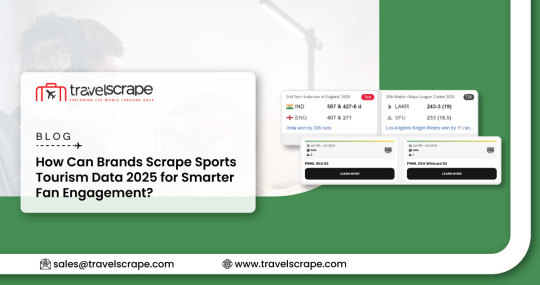
Introduction
In 2025, sports tourism data 2025 is revolutionizing the global travel industry as fans embrace a new era of mobile, digital, and experience-driven journeys. No longer content with watching games from home, today's sports enthusiasts follow their teams across countries—flocking to football tournaments, F1 circuits, and championship arenas worldwide. What's powering this shift? Data. Specifically, the ability to scrape event travel deals from various online platforms has become a strategic advantage for travel brands and sports event organizers. Companies now harness scraped insights to monitor ticket prices, track hotel availability near stadiums, and decode fan engagement across social media. This real-time information fuels smarter fan travel analytics, enabling providers to create personalized, cost-effective, and hyper-relevant sports travel experiences. In a market where timing and loyalty are everything, data isn't just valuable—it's game-changing for fan travel in 2025.
The Rise of Sports-Fueled Travel
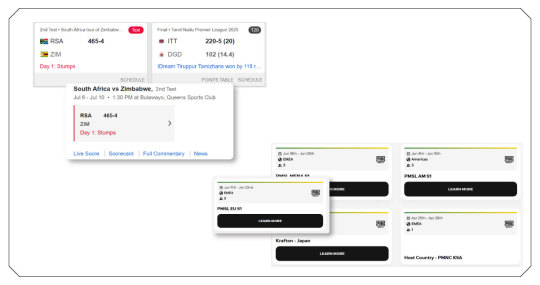
In 2025, sports tourism is no longer a niche interest—it's a full-blown cultural movement. Fans are traveling for:
Live experiences: World Cups, Olympics, Super Bowls, UFC main events, and eSports championships.
Regional events: Cricket tours, domestic league playoffs, and derby rivalries.
Marathons and adventure races: Increasingly, athletes and amateurs travel to compete in city-wide races, Ironman triathlons, and obstacle runs.
Fan conventions: From meet-and-greets to fantasy league summits.
Each travel event carries a rich layer of logistical data that is now being scraped and analyzed to enhance fan journeys.
Understanding Fan Demand Through Data Scraping
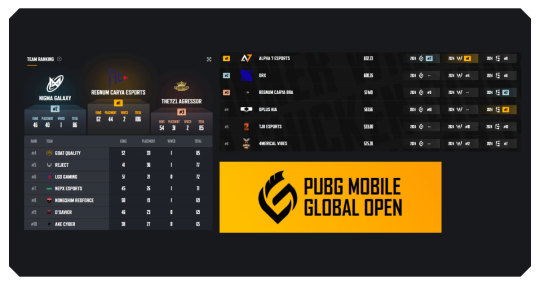
The traditional travel model relied on estimates and historical data. In contrast, 2025's platforms now scrape live data to map fan demand in real time. Here's how:
Search engine queries about sports event dates, host cities, or "where to watch" are scraped for trend forecasting.
Flight and hotel aggregator websites are scraped to detect spikes in price and availability near event locations.
Event ticketing platforms provide real-time data on seat inventory, price changes, and geographic buyer data.
Social media and fan forums reveal location-based enthusiasm, allowing tour operators to identify potential hot zones of demand before bookings surge.
This kind of fan travel analytics ensures suppliers stay ahead of the curve and don't miss out on monetization opportunities.
Extracting Venue-Based Accommodation Data
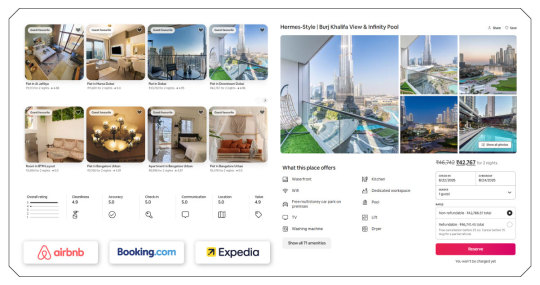
Local hotel prices often surge within hours when major sports events are scheduled. This gives rise to a critical use case: extracting stadium accommodation prices. Key data points include:
Number of hotels within a specific radius of the venue
Price range per night across budget, mid-tier, and luxury segments
Peak booking days
Booking platform comparisons (Booking.com, Airbnb, Expedia, etc.)
Web scraping enables businesses to aggregate this information and design packages accordingly, such as "3-night stay near the stadium with shuttle service," backed by scraped inventory data.
AI-Powered Itinerary Crafting for Fans
Another powerful outcome of sports tourism scraping is AI-generated fan itineraries. Let's say a Manchester United fan wants to attend an away Champions League match in Italy. Platforms now scrape:
Match schedules
Ticket release timelines
Fan zone details
Public transport and ride-share data
City-wide events (concerts, festivals, fan meetups)
Dining and local pub ratings
AI combines this with the user's preferences to create a personalized, event-based itinerary. The result? A seamless fan journey—designed in minutes and optimized by data.
Event-Based Dynamic Pricing for Travel Products
With access to live scraping feeds from sports schedules and ticket platforms, travel companies in 2025 are optimizing their offerings through event-based travel scraping. This real-time intelligence allows them to implement highly responsive dynamic pricing strategies, adjusting costs based on demand shifts and event confirmations. For instance:
When a major football semifinal is confirmed in Madrid, platforms extract stadium accommodation prices to monitor room availability and trigger price adjustments across hotel aggregator sites.
Using sports fan travel data from booking patterns and fan forums, travel platforms detect surge periods and create exclusive offers before competitors react.
Through airline data scraping, platforms identify route popularity and demand clusters, enabling them to fine-tune airfare deals and group travel bundles.
By integrating these insights, companies maintain price competitiveness, improve inventory management, and enhance the fan's journey with more innovative, data-driven experiences.
Real-Time Fan Sentiment Analysis

Scraping isn't only about numbers—it's also about understanding emotions. Monitoring fan conversations online through forums, hashtags, and comments helps in:
Predicting turnout (e.g., a fanbase's excitement over a matchup)
Identifying preferred travel destinations or accommodations
Uncovering pain points in past fan experiences
For example, scraping Twitter data on "match day travel" might reveal that fans prefer staying 10km away to avoid traffic, or that many faced check-in delays in previous seasons. These insights translate directly into better, more informed offerings.
Multi-Source Scraping for Sports Travel Bundles
Modern platforms now scrape ticket + travel bundles from diverse sources:
Sports franchise sites
Travel aggregator platforms
Airline and hotel partner portals
Third-party experience providers
Bundled offers often contain layered pricing and inclusions. Scraping helps create accurate comparisons. This empowers the end user to choose smarter and businesses to optimize their packages in real time.
Fan-Centric Experiences: Beyond Just the Game
Scraping tools are being used to pull data about travel logistics and the experiences fans want. Examples of scraped content include:
Pub crawl maps near the venue
Fan-generated playlists
Restaurant reservations trending among fans
Instagram stories tagged with #GameDayExperience
This allows brands to craft holistic offerings, like "Match Day + City Fan Trail," giving visitors an authentic and immersive fan travel experience.
Predictive Travel Demand Models for Sports Events
One of the most impactful uses of scraped sports travel data is predictive modeling. Data collected over time—fan booking patterns, ticket demand peaks, accommodation preferences—feed into AI models that can:
Estimate travel demand for upcoming events
Recommend venue-city combinations for future sports events
Assist organizers in deciding ticket release windows and pricing tiers
This insight-driven approach increases profitability while enhancing fan satisfaction.
Scraping Platforms Used in 2025 Sports Travel
In 2025, scraping sports fan travel data is powered by a combination of:
Aggregators like Kayak, Trivago, and Skyscanner
Event-based APIs for ticketing data (e.g., Eventbrite, Ticketmaster)
Social listening tools scraping X (formerly Twitter), Reddit, and TikTok
Travel blogs and vlogs where scraped content includes itineraries, city guides, and reviews
Google Trends and Maps for analyzing destination interest and accessibility
Match-day travel planning tools that collect transit updates and local disruption news
These platforms allow small startups and global players to build detailed, up-to-date travel intelligence systems.
Regional Patterns in Sports Fan Travel
Different regions demonstrate distinct fan travel behaviors, and businesses now rely on advanced data scraping techniques to uncover and respond to these patterns:
European football fans typically book early and prefer accommodations within walking distance of stadiums. Platforms use match-day travel planning tools to offer streamlined routes and local transport options, enhancing their experience.
American fans frequently travel in groups and favor convenience. Providers scrape ticket + travel bundles to curate comprehensive packages that include flights, hotel stays, and event access, catering to their preference for simplicity and value.
Asian sports tourists prioritize digital solutions. Their planning revolves around apps, QR codes, and mobile booking platforms. Companies deploy AI for sports travel to deliver customized itineraries based on online behavior and past preferences.
Middle Eastern fans combine sports events with high-end tourism and retail. Platforms use dynamic pricing for events to adjust offerings based on premium preferences and luxury service demands.
These regional insights allow platforms to fine-tune experiences, boost engagement, and build long-term fan loyalty.
Why Sports Leagues Are Now Embracing Travel Data?
Until recently, sports leagues' primary focus was broadcasting and media rights. However, in 2025, their strategy has evolved to prioritize fan travel optimization as a key growth area. With fans traveling globally to attend matches, leagues leverage data scraping to transform how events are planned and monetized.
Using scraping tools to extract sports event calendars, organizations can anticipate travel demand well in advance and align event promotions accordingly. They analyze booking trends to understand which fan groups are most likely to travel and create personalized experiences based on those insights. Additionally, leagues now scrape sports travel packages to benchmark offers, integrate travel perks, and enhance ticketing bundles.
They also monitor real-time hotel event rates, enabling better coordination between match schedules and accommodation availability. For example, a tennis championship in Dubai can be perfectly timed and marketed by syncing fan arrivals, hotel pricing trends, and package offers—all driven by data.
The Future of Sports Travel Intelligence
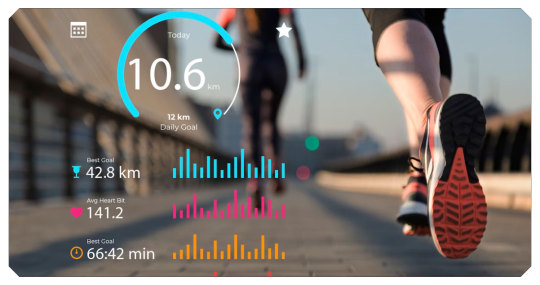
The landscape of scraped sports tourism data is set to become even more sophisticated and precise. Expect these powerful trends to define the future:
Voice-based scraping to identify fan travel intent through interactions with smart home devices and virtual assistants.
City-based event travel scraping will deliver ultra-localized insights, helping businesses understand which urban areas generate the most fan interest and bookings.
hotel data scraping will allow platforms to track room availability, dynamic pricing, and peak occupancy patterns near stadiums and arenas.
Airlines' data scraping will power more innovative route planning and demand forecasting, especially around international matches and tournaments.
Real-time flight price monitoring will ensure fans receive alerts and deals aligned with ticket releases and event schedules.
In 2025, fan travel will be more than reactive—it will be a data-driven, algorithmically designed journey tailored to each fan's digital footprint.
How Travel Scrape Can Help You?
End-to-End Coverage Across Travel Ecosystem We scrape data from flights, hotels, vacation rentals, transport, ticketing platforms, and event listings, ensuring you receive a complete and actionable travel dataset tailored to your goals.
Real-Time, Location-Based Intelligence Our tools deliver real-time data, including dynamic pricing, event-triggered fluctuations, and geo-specific availability, helping you act instantly on market shifts and fan travel behavior.
Customizable Travel Scraping API Solutions We offer scalable travel scraping API integrations that let you pull structured data from any city, country, or platform—whether it's for sports events, seasonal tourism, or business travel trends.
Multi-Platform Aggregation & Comparison Our services include travel aggregator scraping and pulling data from Booking.com, Expedia, Skyscanner, Airbnb, and more, so you can benchmark, analyze, and optimize travel offerings.
Insight-Driven Dashboards with Predictive Analytics We don't just scrape—we translate raw travel data into insights with AI-backed dashboards to help you predict demand, refine offerings, and grow conversions faster.
Conclusion
In 2025, tapping into vacation rental pricing data 2025 has become crucial for delivering tailored sports travel experiences. Every move fans make—searching, booking, reviewing—creates digital trails that smart platforms are now capturing through advanced travel scraping API tools. Businesses leveraging these technologies are transforming how they understand fan preferences, optimize pricing, and enhance loyalty. By combining travel aggregators scraping with real-time event intelligence and AI, companies can build predictive models that accurately anticipate fan behavior. Data is powering a new era in sports tourism, from planning match-day stays to curating stadium-adjacent itineraries. The future belongs to businesses that act fast, analyze smart, and personalize every aspect of the fan's journey.
Ready to elevate your travel business with cutting-edge data insights? Get in touch with Travel Scrape today to explore how our end-to-end data solutions can uncover new revenue streams, enhance your offerings, and strengthen your competitive edge in the travel market.
Source : https://www.travelscrape.com/brands-scrape-sports-tourism-data-2025.php
#SportsTourismData2025#ScrapeEventTravelDeals#FanTravelAnalytics#FanDemandInRealTime#ExtractingStadiumAccommodationPrices#EventBasedTravelScraping#DynamicPricingStrategies#SportsFanTravelData
0 notes
Text
📊 #TexasRetailers: Leveraging #WalmartDataScraping for Localized Offers 🛒

In the competitive retail landscape of Texas, real-time pricing intelligence is crucial. Actowiz Solutions' recent initiative demonstrates how Walmart data scraping empowers Texas-based retailers to monitor and compare grocery prices, facilitating informed decision-making and strategic planning.
🔍 #KeyInsights:
#RealTimePriceMonitoring: Implemented hourly data extraction from Walmart, enabling continuous tracking of product prices and ensuring up-to-date market information.
#GeoPricingHeatmaps: Analyzed pricing trends across major Texas cities like Houston, Dallas, Austin, and San Antonio, uncovering regional disparities and aiding in localized pricing strategies.
#DynamicPricingStrategies: Access to real-time data supports the development of dynamic pricing models, enhancing competitiveness and profitability.
📈 #StrategicApplications:
#InventoryOptimization: Understanding price fluctuations aids in forecasting demand and managing stock levels efficiently.
#PromotionalEffectiveness: Evaluating the impact of discounts and offers across different regions helps in tailoring promotions for maximum ROI.
#MarketTrendAnalysis: Continuous data collection facilitates the identification of emerging market trends and consumer preferences.
0 notes
Text

Introduction
In the evolving digital shopping world, consumers heavily depend on price comparisons to make well-informed purchasing choices. With grocery platforms such as Blinkit, Zepto, Instamart, and Big Basket offering varying price points for identical products, identifying the best deals can be complex.
This is where Web Scraping Techniques play a crucial role, automating the process of tracking and analyzing prices across multiple platforms. Whether you are a consumer seeking savings or a retailer evaluating competitor pricing, Web Scraping Grocery Data For Price Comparison provides a highly effective solution.
Why Compare Grocery Prices?
Comparing grocery prices across multiple platforms is essential for consumers and businesses to make informed purchasing decisions, stay competitive, and optimize costs.
Here's why it matters:
Cost Savings for Consumers
Business Competitive Analysis
Data-Driven Purchasing Decisions
Market Insights for Analysts
Challenges in Scraping Grocery Prices
Extracting Grocery Prices from online platforms presents multiple technical hurdles due to website complexities, anti-scraping measures, and frequent structural changes. Efficient solutions require adaptive techniques to ensure accuracy and scalability.
Dynamic Website Content
Anti-Scraping Measures
Frequent Website Updates
Scalability and Data Volume
Benefits of Web Scraping Grocery Data For Price Comparison
Web scraping grocery data provides businesses and consumers with real-time, accurate, and automated insights into price fluctuations across multiple platforms, enabling more intelligent purchasing and pricing strategies.
Track Grocery Prices In Real-Time
Saves Time and Effort
Data-Backed Decision Making
Historical Price Trends
Case Study: Web Scraping in Grocery Price Comparison
To showcase the effectiveness of Web Scraping Grocery Data For Price Comparison, we conducted a month-long study tracking grocery prices across multiple platforms.
1. Data Collection Process
A custom-built Grocery Prices Tracker was designed to extract essential pricing data, including product names, categories, prices, and discounts from leading grocery platforms:
Blinkit: Implemented BeautifulSoup and Selenium to handle JavaScript-rendered content efficiently.
Zepto: Utilized Selenium to extract grocery pricing data dynamically.
Instamart: Leveraged API requests and browser automation for seamless data retrieval.
Big Basket: Employed a combination of BeautifulSoup and Selenium to capture dynamically loaded content.
2. Key Findings
The analysis revealed critical insights into grocery pricing patterns across platforms:
Price Variability: Up to 15% price difference was observed for everyday grocery items across different platforms.
Discount Trends: Big Basket maintained consistent discounts, while Blinkit frequently introduced flash sales, influencing short-term pricing dynamics.
Hidden Charges: Additional costs, particularly delivery fees, played a major role in determining consumers' final purchase price.
Best Savings: Over one month, Zepto emerged as the most cost-effective platform for grocery shopping.
3. Business Applications
The extracted insights offer valuable applications for various stakeholders:
Retailers: Optimize pricing strategies based on real-time competitive data.
Consumers: Make informed decisions by identifying the most budget-friendly grocery platform.
Market Analysts: Track Grocery Prices and emerging trends across Blinkit, Zepto, Instamart, and Big Basket, enabling data-driven market predictions.
This analysis provides a data-backed approach to understanding grocery pricing strategies, offering actionable insights for businesses and consumers.
Key Tools & Technologies for Grocery Price Scraping
Developing a robust Grocery Price Comparison system requires a well-structured approach and the correct set of tools. Below are the key tools & technologies that play a crucial role in ensuring accurate and efficient data extraction:
Python: Serves as the core programming language for automating the web scraping process and handling data extraction efficiently.
BeautifulSoup: A widely used library that facilitates parsing HTML and XML documents, enabling seamless data retrieval from web pages.
Scrapy: A high-performance web scraping framework that provides structured crawling, data processing, and storage capabilities for large-scale scraping projects.
Selenium: Essential for scraping websites that rely heavily on JavaScript by simulating human interactions and extracting dynamically loaded content.
Proxies & VPNs: Helps maintain anonymity and prevent IP bans when scraping large-scale data across multiple sources.
Headless Browsers: Enables automated interaction with dynamic websites while optimizing resource usage by running browsers without a graphical interface.
Businesses can efficiently extract and compare grocery pricing data by leveraging these technologies, ensuring competitive market insights and informed decision-making.
Step-by-Step Guide to Scraping Grocery Prices
A Step-by-Step Guide to Scraping Grocery Prices provides a structured approach to extracting pricing data from various online grocery platforms. This process involves selecting the appropriate tools, handling dynamic content, and storing the extracted information in a structured format for analysis.
1. Scraping Blinkit Grocery Prices
Identify the product categories and corresponding URLs for targeted scraping.
Utilize BeautifulSoup for static web pages or Selenium to handle interactive elements.
Manage AJAX requests to extract dynamically loaded content effectively.
Store the extracted data in CSV, JSON, or a database for easy access and analysis.
2. Extracting Zepto Grocery Prices
Leverage Selenium to interact with webpage elements and navigate through the website.
Implement wait times to ensure content is fully loaded before extraction.
Structure the extracted data efficiently, including product names, prices, and other key attributes.
3. Scraping Instamart Grocery Prices
Use Selenium to manage dynamically changing elements.
Extract product names, prices, and discount information systematically.
Implement headless browsers to enable large-scale automation while minimizing resource consumption.
4. Web Scraping Big Basket Grocery Prices
Apply BeautifulSoup to extract data from static pages efficiently.
Utilize Selenium to handle dynamically loaded product details.
Store and organize extracted product information in a structured manner for further processing.
This guide provides a comprehensive roadmap for efficiently scraping grocery price data from various platforms, ensuring accuracy and scalability in data collection.
Automating the Process
To ensure continuous Track Grocery Prices In Real-Time, use automation techniques like cron jobs (Linux) or task schedulers (Windows).# Run scraper every 6 hours 0 */6 * * * /usr/bin/python3 /path_to_script.py
Conclusion
In today’s fast-paced digital marketplace, Web Scraping Grocery Data For Price Comparison is essential for making informed purchasing and pricing decisions. Automating data extraction allows businesses and consumers to analyze price variations across multiple platforms without manual effort.
With accurate Grocery Price Comparison, shoppers can maximize savings, while retailers can adjust their pricing strategies to stay ahead of competitors. Real-time insights into pricing trends allow businesses to respond quickly to market fluctuations and promotional opportunities.
We offer advanced solutions for Scraping Grocery Prices, ensuring seamless data collection and analysis. Whether you need a custom scraper or large-scale price monitoring, our expertise can help you stay competitive. Contact Retail Scrape today to implement a powerful grocery price-tracking solution!
Source :https://www.retailscrape.com/automate-web-scraping-grocery-data-for-price-comparison.php
Originally Published By https://www.retailscrape.com/
#WebScrapingTechniques#PriceComparisonThroughWebScraping#WebScrapingGroceryData#GroceryPriceComparison#AutomatedPriceTracking#OnlineGroceryDataExtraction#RealTimePriceMonitoring#GroceryMarketAnalytics#CompetitivePricingAnalysis#RetailDataScraping#GroceryEcommerceInsights#ZeptoPriceData#BlinkitDataScraping#BigBasketPriceComparison#InstamartPricingIntelligence#AutomatedDataExtractionTools#GroceryProductDataCollection#DynamicPricingStrategy#APIBasedPriceScraping#DataAutomationForRetail#GroceryIndustryTrends#PriceOptimizationUsingData#ConsumerPricingIntelligence
0 notes
Text

Background
The UK e-commerce market is intensely price-driven—especially on platforms like Amazon UK, where sellers compete not just on product quality but on dynamic pricing.
A London-based electronics reseller found it increasingly difficult to maintain price competitiveness, especially against third-party sellers and Amazon’s own listings.
They turned to RetailScrape to implement a real-time Amazon UK price scraping solution focused on product-specific monitoring and smart price adjustments.
Business Objectives
Monitor top-selling electronics SKUs on Amazon UK in real time
Automate price benchmarking against competitors, including Amazon Retail
Enable dynamic repricing to retain Buy Box share
Improve margin optimization and increase sales conversions
Challenges
1. Amazon’s Algorithmic Pricing: Amazon frequently adjusts product prices based on demand, competition, and inventory—often several times a day.
2. Buy Box Competition: Winning the Buy Box is essential for sales, but price is the primary deciding factor.
3. Manual Price Reviews: Previously, the client reviewed pricing only once daily, missing out on mid-day price changes.
RetailScrape’s Data-Driven Solution
RetailScrape deployed a custom Amazon UK Scraping Pipeline configured to track:
Hourly prices for over 500 competitor-listed SKUs
Buy Box ownership status
Seller names and ratings
Amazon Retail price (if applicable)
Availability and delivery time
Data was pushed directly into the client’s pricing engine via RetailScrape’s secure API, enabling automated repricing rules.
Sample Extracted Data
Key Insights Delivered
1. Amazon Undercuts: Amazon Retail was undercutting third-party sellers by 3-7% in 40% of tracked SKUs.
2. Evening Discounts: The lowest competitor prices were often posted between 7 PM – 10 PM GMT.
3. Buy Box Sensitivity: A pricing difference as small as £0.30 often determined Buy Box status.
Client Actions Enabled by RetailScrape
Set up automated repricing rules triggered when a competitor lowered prices by more than 1%.
Introduced “Buy Box Guardrails”—ensuring minimum margin thresholds were met while staying competitive.
Deprioritized listings where Amazon Retail owned the Buy Box consistently, reallocating marketing budget to other products.
Business Results Achieved (After 6 Weeks)

“RetailScrape turned our Amazon pricing strategy from reactive to real-time. Within a month, we nearly doubled our Buy Box retention and improved margins without sacrificing competitiveness.”
- CE-Commerce Director, London Electronics Seller
Conclusion
For UK-based Amazon sellers, competitive pricing isn't a nice-to-have—it's survival. With RetailScrape, our London client transitioned to a data-first strategy using real-time Amazon UK scraping. The result? Better pricing decisions, improved visibility, and healthier profit margins.
RetailScrape continues to support them with advanced analytics and API-based automation as they scale across new product lines in 2025.
Read more >> https://www.retailscrape.com/amazon-price-tracking-for-london-retailers.php
officially published by https://www.retailscrape.com/.
#AmazonUKScrapingData#RealTimeAmazonScraping#AmazonUKPriceScraping#AmazonUKScrapingPipeline#PriceOptimization#RetailScrapeAPI#DynamicPricingStrategy#CompetitorPriceTracking#AmazonPricingData#AmazonSellerAnalytics#eCommercePriceOptimization
0 notes
Text
Price Optimization for a London-Based Seller Using Amazon UK Scraping Data

Background
The UK e-commerce market is intensely price-driven—especially on platforms like Amazon UK, where sellers compete not just on product quality but on dynamic pricing.
A London-based electronics reseller found it increasingly difficult to maintain price competitiveness, especially against third-party sellers and Amazon’s own listings.
They turned to RetailScrape to implement a real-time Amazon UK price scraping solution focused on product-specific monitoring and smart price adjustments.
Business Objectives
Monitor top-selling electronics SKUs on Amazon UK in real time
Automate price benchmarking against competitors, including Amazon Retail
Enable dynamic repricing to retain Buy Box share
Improve margin optimization and increase sales conversions
Challenges
1. Amazon’s Algorithmic Pricing: Amazon frequently adjusts product prices based on demand, competition, and inventory—often several times a day.
2. Buy Box Competition: Winning the Buy Box is essential for sales, but price is the primary deciding factor.
3. Manual Price Reviews: Previously, the client reviewed pricing only once daily, missing out on mid-day price changes.
RetailScrape’s Data-Driven Solution
RetailScrape deployed a custom Amazon UK Scraping Pipeline configured to track:
Hourly prices for over 500 competitor-listed SKUs
Buy Box ownership status
Seller names and ratings
Amazon Retail price (if applicable)
Availability and delivery time
Data was pushed directly into the client’s pricing engine via RetailScrape’s secure API, enabling automated repricing rules.
Sample Extracted Data
Key Insights Delivered
1. Amazon Undercuts: Amazon Retail was undercutting third-party sellers by 3-7% in 40% of tracked SKUs.
2. Evening Discounts: The lowest competitor prices were often posted between 7 PM – 10 PM GMT.
3. Buy Box Sensitivity: A pricing difference as small as £0.30 often determined Buy Box status.
Client Actions Enabled by RetailScrape
Set up automated repricing rules triggered when a competitor lowered prices by more than 1%.
Introduced “Buy Box Guardrails”—ensuring minimum margin thresholds were met while staying competitive.
Deprioritized listings where Amazon Retail owned the Buy Box consistently, reallocating marketing budget to other products.
Business Results Achieved (After 6 Weeks)

“RetailScrape turned our Amazon pricing strategy from reactive to real-time. Within a month, we nearly doubled our Buy Box retention and improved margins without sacrificing competitiveness.”
- CE-Commerce Director, London Electronics Seller
Conclusion
For UK-based Amazon sellers, competitive pricing isn't a nice-to-have—it's survival. With RetailScrape, our London client transitioned to a data-first strategy using real-time Amazon UK scraping. The result? Better pricing decisions, improved visibility, and healthier profit margins.
RetailScrape continues to support them with advanced analytics and API-based automation as they scale across new product lines in 2025.
Read more >> https://www.retailscrape.com/amazon-price-tracking-for-london-retailers.php
officially published by https://www.retailscrape.com/.
#AmazonUKScrapingData#RealTimeAmazonScraping#AmazonUKPriceScraping#AmazonUKScrapingPipeline#PriceOptimization#RetailScrapeAPI#DynamicPricingStrategy#CompetitorPriceTracking#AmazonPricingData#AmazonSellerAnalytics#eCommercePriceOptimization
0 notes
Text
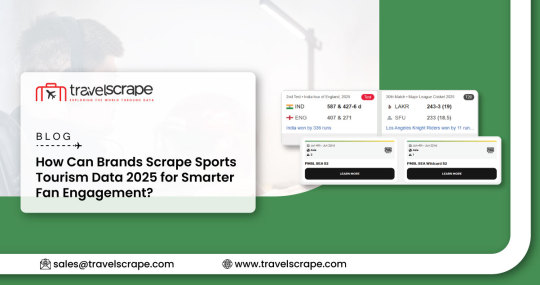
Scrape Sports Tourism Data 2025 for Smarter Fan Engagement
Scrape Sports Tourism Data 2025 to uncover real-time insights, personalize fan experiences, and boost travel engagement.
#SportsTourismData2025#ScrapeEventTravelDeals#FanTravelAnalytics#FanDemandInRealTime#ExtractingStadiumAccommodationPrices#EventBasedTravelScraping#DynamicPricingStrategies#SportsFanTravelData
0 notes
Text
Scrape Sports Tourism Data 2025 for Smarter Fan Engagement
Scrape Sports Tourism Data 2025 to uncover real-time insights, personalize fan experiences, and boost travel engagement.
#SportsTourismData2025#ScrapeEventTravelDeals#FanTravelAnalytics#FanDemandInRealTime#ExtractingStadiumAccommodationPrices#EventBasedTravelScraping#DynamicPricingStrategies#SportsFanTravelData
0 notes